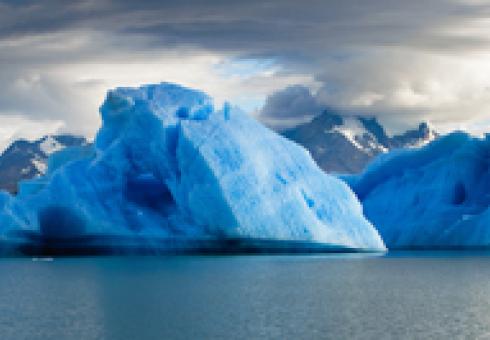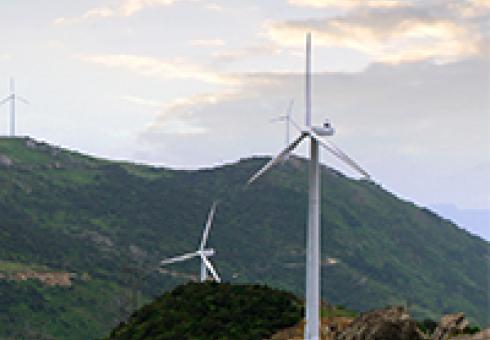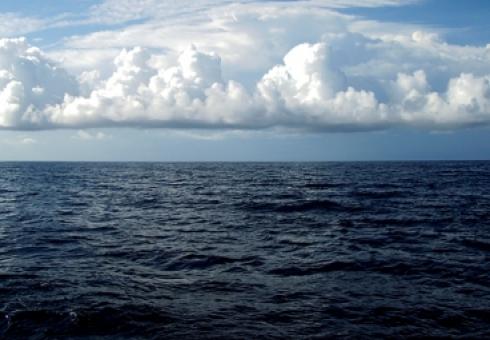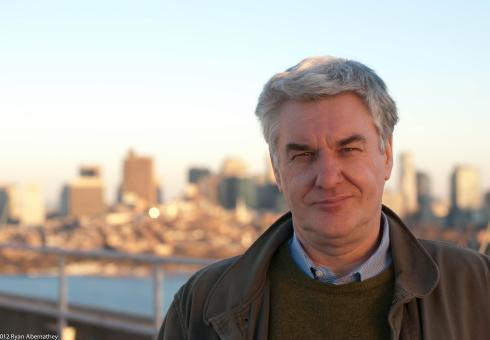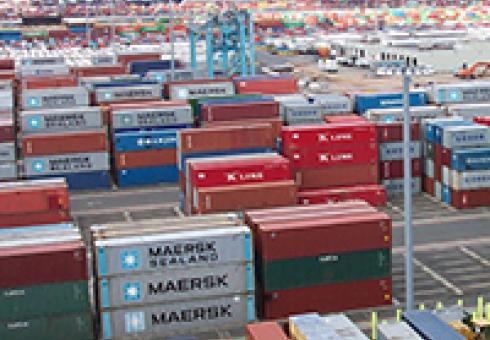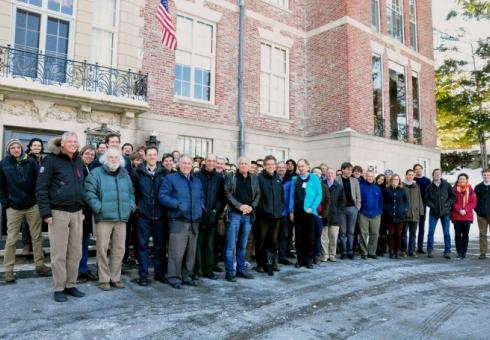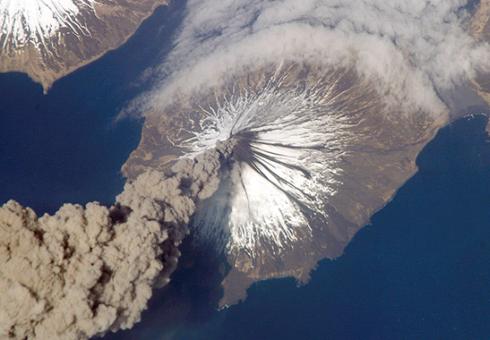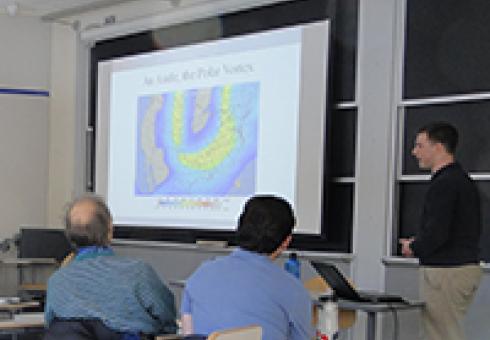News + Media
John Reilly
Co-director MIT Joint Program on the Science and Policy of Global Change
The difficulty of predicting local effects of climate change makes a compelling case for preventing it.
This week the Intergovernmental Panel on Climate Change (IPCC) released a major report focused on what actions might or could be taken to adapt to climate change. It attempts to describe who and what is especially vulnerable to climate change, and gives an overview of ways some are adapting.
The report makes clear that specific estimates of how climate change will affect places, people, and things are very uncertain. Brought down to a local level, climate change could go in either direction—there are risks that a given area could get drier or wetter, or suffer floods or droughts, or both. This uncertainty makes efforts to prevent climate change even more important.
Specific risks to natural systems are well documented by the report. It finds, for example, the greatest risks are to those ecosystems, people, and things in low-lying coastal areas, because expected sea-level changes are in only one direction, up. This is also the case in the Arctic, where the temperature rise is expected to be much greater than the global average. There is good science and unanimous agreement among climate models behind these assertions.
But a frustrating aspect of the report—and a reflection of the difficulty of working in this line of research—is that very few specific risks to humans are quantified in a meaningful way. For example, one might ask: has my risk of death increased because of more hot days? The report says, “Local changes in temperature and rainfall have altered the distribution of some water-borne illnesses and disease vectors (medium confidence).” This seems to state the obvious, while giving no indication of whether the alterations may have increased or decreased risk or what the magnitude of the alteration might be. Given that the statement seems to say little, it is hard to imagine there is not high confidence.
The report does conclude with high confidence risks to low-lying coastal areas: emergencies during extreme weather, mortality from heat, food insecurity, loss of livelihood in rural areas due to water shortage and temperature increases, loss of coastal ecosystems and livelihoods that depend on them, and loss of freshwater ecosystems. But again, this high confidence comes with an absence of quantification of how many/much and the degree of risk. Will extreme weather double, triple, or quadruple the number of extreme emergency weather-related events of a given magnitude (dollars or lives lost)? Will it increase these incidences by 10 percent, or will some areas face increased risk while other areas face reduced risk?
In the end, the report is a compendium of things that might happen or are likely to happen to someone or something, somewhere. But what does this actually mean for me, or anyone who might read the report? I would avoid beachfront property. If my livelihood depended on a coastal resource, I would try to find a different job, or at least urge my children to pursue another line of work.
That is where a measure of wealth brings some resilience—I have those options, others do not. The report “quantifies” in some sense by establishing an element of “relative risk,” concluding that the poor and marginalized in society are more vulnerable because they do not have the means to adapt. Beyond this, it is not clear that climate prediction is at a high enough level to offer information that I can use to take concrete actions for most day-to-day decisions and investments.
What the report does provide is some documentation of adaptation in action—what different regions, cities, sectors, and groups are doing to adapt—concluding that there is a growing body of experience from which to learn.
However, perhaps the greatest truth in the report is in the following statement:
“Adaptation is place and context specific, with no single approach for reducing risks appropriate across all settings (high confidence). Effective risk reduction and adaptation strategies consider the dynamics of vulnerability and exposure and their linkages with socioeconomic processes, sustainable development, and climate change.”
Hence, while it’s possible to learn from others’ adaptation experiences, in the end, the specifics of climate change in my place, given my circumstances, and the socio-economic environment in which I live will present me with very different climate outcomes and opportunities to adapt than you will have where you live.
This fact alone raises the cost of adaptation, because to some degree each recipe needs to be invented anew. What worked in the past likely won’t work in the future—or at least, not as well. And we need to process a lot of highly uncertain climate projections in developing the new recipe.
The report also concludes, not surprisingly, that risks increase and extend to more people, places, and things if the global temperature rise is three degrees Celsius or greater than if there is only a one-degree rise. Overall, the report provides, in my judgment, a compelling case for more serious mitigation efforts—the topic of the next IPCC report, to come out later this month.
John Reilly is the co-director of the MIT Joint Program on the Science and Policy of Global Change.
By Oguzhan Ozsoy
Anadolu Agency
There are currently 14 nuclear power plants in operation with 8 more under construction in China, wind energy is thirds largest energy source. China the largest consumer of coal in the world is attempting to diversify its energy sources to move towards renewable energy in particular, wind and nuclear power.
[...]
China's nuclear power generation should increase over the next few years, according to Energy expert Michael Davidson, from Massachusetts Institute of Technology (MIT).
"This is part of a concerted effort to introduce renewable and other non-fossil fuel energies into the electricity mix to reduce China's reliance on coal," he said adding that "wind benefited from a stable feed-in-tariff". It appears that there will be an increase in reliance on both wind and nuclear energy in the country over the next few years.
Davidson anticipates that electricity generated through nuclear energy could overtake that generated from wind energy by the end of 2015," said Davidson, who works on the China Energy and Climate Project in MIT, adding that China is committed to expanding nuclear power as well, however, the nuclear industry grew slower than wind due to its lengthy construction and time-consuming approval processes.
Davidson confirmed that the current nuclear power generation should increase over the next few years as there are 14 nuclear power units in operation in China with 8 plants under construction and in preliminary preparation with approval, according to China National Nuclear Corporation (CNNC).
More...
By Genevieve Wanucha
Oceans at MIT
The ocean plays a critical role in climate change, especially in setting the climate's response to increasing anthropogenic emissions of greenhouse gases. As excess heat accumulates in various parts of the Earth system, most of that thermal energy goes into the ocean instead of into the lower atmosphere and land.
“We can compare the ocean to a cold compress that a parent applies to the forehead of a child with a fever,” says Yavor Kostov, a graduate student in the Program in Atmospheres, Oceans, and Climate (PAOC) within MIT’s Department of Earth, Atmospheric and Planetary Sciences (EAPS). “In that this wet towel can absorb some of the heat, giving partial relief until the towel itself becomes saturated with heat.” Similarly, the ocean’s enormous capacity to store heat temporarily slows down global warming.
In recent years, a hot topic in climate science has arisen over the fact that climate models vary widely in their representation of ocean heat uptake. The oceans in some models absorb more or less heat in high-latitude regions such as the North Atlantic and Southern Ocean; some store heat at different depths. According to two new papers published in Geophysical Research Letters, those details matter a great deal to the predictions of global warming over the coming centuries.
Understanding ocean circulation
One of these papers focuses on the deep overturning circulation in the North Atlantic Ocean, better known as AMOC, which transports and buries atmospheric heat in the ocean. Kostov, working with Kyle Armour, an EAPS postdoc, and John Marshall, MIT professor of oceanography, investigated how the various assumptions about this major ocean feature affect model predictions. To do so, he compared a set of new-generation models that the Intergovernmental Panel on Climate Change (IPCC) uses in their projections.
Kostov found that models featuring a deeper and stronger AMOC have a greater capacity to store heat and delay long-term global warming due to increasing levels of carbon dioxide. In other words, a stronger overturning circulation in a model tends to promise a cooler world in one hundred years.
There are other even greater sources for the differences in climate predictions across models, such as cloud responses to greenhouse gases, Kostov notes, “but all aspects of the climate system are important, and we have to take into account the role of the ocean in order to improve our predictions for future warming.”
These results led the MIT group to conclude that models must better represent the AMOC and its future changes, based on real-world measurements that extend over time and geographical location. Unfortunately, there is not a long record of observations in the AMOC, thanks to the enormous technical difficulty of probing the ocean’s deep layers. However, Kostov notes his excitement that a few large-scale oceanographic projects, including U.K. RAPID and U.S. CLIVAR, have started to continuously monitor how the circulation varies with depth in an effort to fill this scientific void.
Climate connection
Along with depth, the geographical location of ocean heat uptake matters to climate change. Observations suggest that much of the heat enters the ocean in high-latitude regions such as the North Atlantic and Southern Ocean. In 2010, modeling by Michael Winton of the NOAA/Geophysical Fluid Dynamics Laboratory showed that ocean heat uptake at high latitudes tends to cool the Earth significantly more than heat uptake in tropics. Yet, it is unclear why heat uptake at the poles provides the most efficient air conditioning for the entire planet or how this sensitivity should be represented in models.
Offering an explanation is Brian Rose, MIT PhD ‘10, an assistant professor at the SUNY Albany Department of Atmospheric and Environmental Sciences, along with MIT's Kyle Armour and David Battisti, professor of atmospheric sciences at the University of Washington, whose new study implicates the activities of low lying clouds above the ocean. Using idealized configurations of several IPCC models, they found that when heat enters the ocean in the tropics, clouds change shape to allow more sunlight to be absorbed by the planet. This cloud transformation doesn't happen in the high latitudes, which the authors suggest as a potential reason why heat uptake in these regions is so good at cooling the planet.
“The authors show that valuable insights can be gained by considering the atmospheric response to an imposed change in the ocean,” comments Timothy Merlis, Assistant Professor at McGill University, who was not involved in the study. “And it will be important to understand why the clouds respond differently to the different regions of ocean heat uptake.”
Ultimately, the study critiques how the field uses observations in estimating the climate’s sensitivity to greenhouse gases. "A common way to calculate climate sensitivity simply combines recent observations of global surface temperature changes, heat uptake, and greenhouse gas forcing," says Armour, "which misses the details of how heat is getting into the ocean. One implication is that we can’t actually estimate long-term warming from present-day observations unless we take into account how the pattern of ocean heat uptake might change with time."
And change it will. For example, the Southern Ocean takes up a lot of heat now. But as the ocean warms over hundreds to thousands of years, the deep ocean currents will become saturated with heat and the Southern Ocean heat sink will eventually shut off. “Neglecting to account for where heat enters the ocean means that we could experience much more warming than anticipated,” Armour says.
Showing how we must look up to the clouds and down to the deep North Atlantic to improve long-term predictions of global warming, these studies converge in a new case for ocean-enlightened climate modeling.
Photo: WHOI/Knorr Cruise, KN178
Genevieve Wanucha
Oceans at MIT
John Marshall, Cecil and Ida Green Professor of Oceanography, recently accepted the 2014 Sverdrup Gold Medal of the American Meteorological Society for his “fundamental insights into water mass transformation and deep convection and their implications for global climate and its variability."
Marshall is an oceanographer with broad interests in climate and the general circulation of the atmosphere and oceans, which he studies through mathematical and numerical models of physical and biogeochemical processes. His research has focused on problems of ocean circulation involving interactions between motions on different scales, using theory, laboratory experiments, and observations as well as innovative approaches to global ocean modeling pioneered by his group at MIT.
The Sverdrup Gold Medal recognizes Marshall’s influential ideas about deep convection in the ocean, the process by which, in certain polar regions, cooling water descends, transporting properties such as oxygen, salt, carbon, and heat into the ocean’s deep interior. Marshall, in a 1990s collaboration with his graduate students Sonya Legg and Helen Hill, née Jones, and the late Professor Friedrich Schott of the University of Kiel, in Germany, demonstrated that the convective process in the ocean occurs slowly enough for it to be influenced by Earth’s rotation. This insight overturned the prevailing view that convection in the ocean was an upside-down version of atmospheric convection.
Marshall’s work on rotating convection in water mass transformation triggered a vast amount of research, including the Labrador Sea Deep Convection Experiment, a major field program in 1996 that provided the most comprehensive set of measurements of ocean convection. The dataset collected on this international expedition led to insights into the convective process in the ocean and its representation in models in light of Marshall’s theoretical descriptions. This body of work also motivated the development of the MIT General Circulation Model (MITgcm), which Marshall’s group first used to simulate deep convection fluid dynamics at high resolution. The algorithms used to represent convection drive the modern-day MITgcm, one of the most widely used global ocean models in the world.
To gain a broader understanding of Earth’s fluid dynamical system, Marshall shifted focus to contemporary issues in global ocean circulation. “I’ve always tried to move forward,” Marshall says. “Even though this work on water mass transformation was enjoyable, I stopped it and moved on to study the role of the Southern Ocean in climate.” Marshall has now spent 10 years revising the scientific understanding of the Antarctic Circumpolar Current (ACC). In particular, his updated modeling shows that the ACC brings up deep water and buried carbon to the surface around Antarctica, leading him and colleagues to suggest that the Southern Ocean is the window by which the interior of the ocean connects to the atmosphere, and is thus a powerful mediator of climate.
Professor Marshall received a PhD in atmospheric sciences from Imperial College London in 1980. He joined MIT’s Department of Earth, Atmospheric and Planetary Sciences in 1991 as an associate professor and has been a professor in the department since 1993. He was elected a Fellow of the Royal Society in 2008. He is coordinator of Oceans at MIT, a new umbrella organization dedicated to all things related to the ocean across the Institute, and director of MIT’s Climate Modeling Initiative (CMI).
Alli Gold Roberts
MIT Joint Program on the Science and Policy of Global Change
China is the world’s second largest national economy and its largest exporter. This growth has come at a cost, with energy demands and associated environmental damages on the rise. China is now the world leader in consumer energy use and CO2 emissions. As countries around the globe work to reduce carbon emissions, policymakers are interested in measuring and ultimately reducing emissions associated with the relocation of industry and manufacturing overseas.
In a study released in the March issue of Energy Economics, researchers at Tsinghua University and MIT developed a new model to determine if policy proposals could help reduce carbon emissions associated with goods exported from China. They found that taxes on energy-intensive exports and policies encouraging the Chinese economy to shift from industry to services are ineffective in significantly reducing total CO2 emissions, because the same goods would still be produced elsewhere.
“Developed countries are discussing the possibility of imposing a trade tariff on emissions embodied in imported goods in an effort to prevent the relocation of high-emitting industries overseas and to shore up domestic competitiveness,” says Tianyu Qi, a PhD student at Tsinghua University and the lead author of the study. “It is important to understand how vulnerable the Chinese economy is to such a policy.”
Approximately 22 percent of China’s CO2 emissions are the result of net exports. These emissions are categorized as “trade-embodied” emissions because they are produced as a result of goods and services that are exported.
In their analysis, the researchers considered the impacts of two policies that are similar to measures included in China’s Twelfth Five-Year Plan. The first policy is a tax on energy-intensive exports and the second policy involves incentivizing a shift in China’s economy away from industry and towards services.
“In exploring these policies—both of which are advertised as carbon-reducing strategies—we find that neither would have a significant impact on total global emissions because reduced production in China is partially offset by increased production elsewhere,” says Qi, also a researcher with the MIT-Tsinghua China Energy and Climate Project.
If policymakers want to simply reduce emissions associated with China’s trade, the researchers suggest policies that support economic structural changes.
“A policy that targets the expansion of domestic demand, along with a shift toward services, is more effective at reducing China’s export-embodied CO2 emissions,” says Valerie Karplus, co-author of the study and the director of the Tsinghua-MIT China Energy and Climate Project. “This will in turn reduce China’s exposure to potential tariffs on embodied carbon imposed overseas.”
Karplus explains that such a move is not a long-term solution to reducing CO2 emissions and would ultimately shift production of many industrial products to other nations—shifting emissions along with them.
The researchers also find that the EU, the U.S. and Japan are the largest net recipients of trade-embodied CO2 emissions. In addition, the researchers expected energy-intensive industries such as steel and aluminum production to be responsible for most of the CO2 emissions associated with China’s trade, but instead they found the production of machinery and equipment to be the main culprit.
“This because China exports large volumes of machinery and equipment products, such as refrigerators and televisions, even though commodities such as aluminum and steel are more CO2-intensive than these products,” explains Niven Winchester, an environmental economist in MIT’s Joint Program on the Science and Policy of Global Change and a co-author of the study.
To analyze the impact of policies on CO2 emissions, the MIT-Tsinghua China Energy and Climate Project developed a new model called the China-in-Global Energy Model, or C-GEM. C-GEM disaggregates China’s 30 provinces and details the entire energy system. The model also includes global trade data to measure the interactions between China and the global economy.
The Tsinghua-MIT China Energy and Climate Project is a collaborative effort between the MIT Joint Program on the Science and Policy of Global Change and the Institute for Energy, Environment and Economy at Tsinghua University in Beijing, China. This group is working to analyze the impact of existing and proposed energy and climate policies in China on technology, energy use, the environment and economic welfare.
Michael Davidson
MIT-Tsinghua China Energy and Climate Project
According to tallies by the National Energy Administration, China added 14 gigawatts (GW) of grid-connected wind power capacity in 2013, now the fifth consecutive year with installs of over 10 GW (here, at a glance, is China’s grid in 2013). Over the same time period, wind curtailment – or, spilled wind, which is when the grid operator tells wind farm operators to reduce output because of reliability or other constraints – has become one of two sore spots, together with grid connection, for the otherwise booming sector (read more background on both topics). Official estimates now available of wind curtailment in 2013 show some improvements over 2012, though the problem is far from solved.
As in previous years, northeastern provinces with large coal-fired power capacities and the transmission-constrained northwestern region topped the list for curtailed wind. Inner Mongolia is part of two separate grid regions: the northwest (W. IMAR) and the northeast (E. IMAR). In the figure, I show the actual capacity factor as well as its reduction compared to the potential capacity factor according to official curtailment statistics.
Measuring curtailment is particularly tricky, because once turbines are slowed or halted it is difficult to reconstruct what the wind power production would have been otherwise. Comparing to the U.S., which consistently has an edge in terms of utilization of its wind turbines, China’s wind farms are under-performing, even after correcting for curtailment. This is largely attributed to different quality in components, though inaccurate curtailment numbers may also play a role. Collectively, this has led to the third year in a row of the unfavorable situation of China leading the world in wind capacity yet still trailing in terms of generation.
Approvals for new wind in some of the provinces heaviest hit by curtailment (Heilongjiang, Jilin, Inner Mongolia and Yunnan) are now being held up as the central government reconsiders how to divvy up its renewable subsidies and promote the sector most efficiently. Following a shake-up by the State Council last March, the central planning agency, the National Development and Reform Commission (NDRC), in theory gave up approval authority to the provinces, after only receiving it two years prior. However, currently, a “makeshift plan” which still incorporates centrally-administered annual targets is being implemented to transition to a more market-based approach.
On the other side of the spectrum, the capacity factor of thermal power (of which coal was 95% of generation in 2012) maintained historically low levels in 2013. Coal’s precipitous decline in the U.S. following the shale gas boom has led to a reduction in capacity factor of 14 percentage points here. Yet, whereas new coal builds in the U.S. are stagnant, China’s decrease has occurred amidst continued capacity expansion.
In these low utilization provinces, there is increasing evidence that China’s coal-fired power sector is overbuilt. In Jilin, for example, a wind-rich northeastern province, coal plants generate at less than 40% of their capacity even as coal capacity doubled from 2008-2011. The Jilin government is expediting approvals for large energy consumers and subsidizing their electricity bills above baseline in an attempt to pick up the slack.
Critically, overcapacity when coupled with China’s generation cost recovery mechanisms and constraining minimum outputs for thermal generators may mean less integration space for renewables—as I explained before here.
The China Electricity Council, in its 2014 projections and recommendations, called out the northeast’s excess capacity problem, recommending that the central government “strictly control” new coal and wind construction in the region. It projected a smaller (though still substantial) increase in coal-fired capacity nationwide of 30 GW. CEC’s other projections for new installs in 2014 (my calculation based on the current 2013 capacity figures): 23 GW hydro, 17 GW wind, 14 GW solar, 6 GW nuclear, and 5 GW gas.
Read the rest of the story here.
By Genevieve Wanucha
Oceans at MIT
Water has a lot of say in how Earth’s climate works. And scientists often acknowledge that the uncertainty about climate’s future trajectory comes from a lack of understanding of water. This intellectual challenge filled the better part of February 10-12 for 37 leading climate researchers and graduate students and postdoctoral fellows who participated in the Lorenz Center’s first scientific workshop, “Water in the Climate System,” at the MIT Endicott House in Dedham, Massachusetts.
The Lorenz Center is a new climate research initiative founded by MIT professors Kerry Emanuel and Daniel Rothman in the Department of Earth, Atmospheric, and Planetary Sciences as a way to renew the emphasis on fundamental questions about climate. The founders dedicated the center to the late MIT professor Edward N. Lorenz, the architect of chaos theory, who shared their conviction that a better description of the underlying principles in climate will make the complex system easier to understand.
Some of the biggest names in climate-related fields presented work on climate and hydrological mechanisms to an audience packed with inquiring minds. Sessions included “Convection,” “Water Vapor, Clouds, and Climate,” “Moisture and Weather,” “Precipitation and Climate,” and “Potpourri,” an eclectic mixture of aquaplanet modeling and geomorphology. All 26 presentations are available in slide format here.
“It was a great opportunity for younger scientists to learn about the big ideas in the field and hear from voices outside of MIT,” says MIT PhD student Tim Cronin. In every discussion period, to avoid the “experts-talking-to-experts” phenomenon, Emanuel asked the graduate students and postdocs to pose the first few questions. This approach made the newer generation of researchers more than mere observers, and their questions drove the conversation, animating the experts in intense discussions of the major climate conundrums of our time: How do ocean and atmosphere circulations transport heat across the globe? How can we design models that accurately estimate regional changes in the water cycle as the globe warms? When can we expect significantly different summers and snowstorms?
This workshop was made possible by a generous gift from Colin Masson, a retired astrophysicist who appreciates the Lorenz Center’s broad view of climate science and who attended the event. Private donations like Masson’s support the Lorenz Center’s regular activities, which also include the annual John Carlson Lecture. To reach their ultimate vision, Emanuel and Rothman are currently raising funds to support graduate students, postdoctoral researchers, and visiting scientists with backgrounds in diverse areas such as applied mathematics, biology, and chemistry.
“Our idea, simply put, is both to attract the very best minds to climate science and to give them free rein to think creatively, unsaddled by the pressing practical demands of climate forecasting,” the founders write in "A Fresh Approach to Climate Science" (pdf). If the “Water in the Climate System” workshop was any indication, the Lorenz Center is already a magnet of basic research talent.
Alli Gold Roberts
MIT Joint Program on the Science and Policy of Global Change
By the late 1990s, scientists had observed more than two decades of rapid global warming, and expected the warming trend to continue. Instead, despite continuing increases in greenhouse gas emissions, the Earth’s surface temperatures have remained nearly flat for the last 15 years. The International Panel on Climate Change verified this recent warming “hiatus” in its latest report.
Researchers around the globe have been working to understand this puzzle—looking at heat going into the oceans, changes in wind patterns, and other factors to explain why temperatures have stayed nearly stable, while greenhouse gas concentrations have continued to rise. In a study published today in Nature Geoscience, a team of scientists from MIT and elsewhere around the U.S. report that volcanic eruptions have contributed to this recent cooling, and that most climate models have not accurately accounted for the effects of volcanic activity.
“This is the most comprehensive observational evaluation of the role of volcanic activity on climate in the early part of the 21st century,” says co-author Susan Solomon, the Ellen Swallow Richards Professor of Atmospheric Chemistry and Climate Science at MIT. “We assess the contributions of volcanoes on temperatures in the troposphere—the lowest layer of the atmosphere—and find they’ve certainly played some role in keeping the Earth cooler.” 
There are many components of the Earth’s climate system that can increase or decrease the temperature of the globe. For example, while greenhouse gases cause warming, some types of small particles, known as aerosols, cause cooling. When volcanoes erupt explosively enough, they enhance these aerosols—a phenomenon referred to as “volcanic forcing.”
“The recent slowdown in observed surface and tropospheric warming is a fascinating detective story,” says Ben Santer, the lead author of the study and a climate scientist at Lawrence Livermore National Laboratory. “There is not a single culprit, as some scientists have claimed. Multiple factors are implicated. The real scientific challenge is to obtain hard quantitative estimates of the contributions of each of these factors to the so-called slowdown.”
The researchers verified the cooling phenomenon by performing two different statistical tests to determine whether recent volcanic eruptions have cooling effects that can be distinguished from the intrinsic variability of the climate. The team found evidence for significant correlations between volcanic aerosol observations and satellite-based estimates of both tropospheric temperature and sunlight reflected by the particles off the top of the atmosphere.
“What’s exciting in this work was that we could detect the influence of the volcanic aerosols in new ways. Using satellite observations confirmed the fact that the volcanic particles reflected a significant amount of the sun’s energy out to space, and of course losing energy means cooling—and the tropospheric temperatures show that too,” explains Solomon, who is also a researcher with MIT’s Joint Program on the Science and Policy of Global Change. “There are still uncertainties in exactly how big the effects are, so there is more work to do.”
Alan Robock, a professor of environmental sciences at Rutgers University and a leading expert on the impacts of volcanic eruptions on climate, says these findings are an important part of the larger climate picture. “This paper reminds us that there are multiple causes of climate change, both natural and anthropogenic, and that we need to consider all of them when interpreting past climate and predicting future climate.”
“Since none of the standard scenarios for evaluating future global warming include volcanic eruptions,” Robock adds, “this paper will help us quantify the impacts of future large and small eruptions when they happen, and thus better interpret the role of humans in causing climate change.”
This research was led by a team at Lawrence Livermore National Laboratory and builds upon work Solomon conducted in 2011, finding that aerosols in an upper layer of the atmosphere—the stratosphere—are persistently variable and must be included in climate models to accurately depict climate changes.
The research was supported by the U.S. Department of Energy.
In climate change, science and policy are inextricably linked—more so than in most contemporary social phenomena. The complexity of understanding earth’s systems generates uncertainty, which feeds into an imperfect policy process that often warps ideal economic instruments beyond recognition. Without clear recognition of this linkage, the resulting mixture is frequently less than appetizing. This January, we continued an MIT Joint Program on the Science and Policy of Global Change tradition of presenting to the MIT community the basics (and some of the nuance) of this complex issue over a two-session Independent Activities Period (IAP) course.
While the minutiae of a 3-dimensional atmosphere and ocean model may be daunting (and require clusters of networked high-performance computers to complete a run), it turns out we can understand a lot about climate change from simplified models that build on basic physics accessible to any first-year undergraduate. Fundamental principles, such as energy balance, yield straightforward arguments about why the Earth should warm as we add greenhouse gases to its atmosphere. Those same principles can also be used to frame simple predictions about how future warming might proceed—information that policymakers and analysts can use to help plan for the future.
Considering climate change as an “externality” (a cost imposed on society by individuals and companies without compensation), economists have developed theories of how to reduce environmental impacts by appealing to pocketbooks. Putting a price on pollution (e.g., carbon tax) or selling and trading “rights” to pollute (e.g., cap-and-trade) are two common policy levers to encourage polluters to cut back while lessening the overall economic impact. When we couple our global climate models with global economic models (collectively, the Integrated Global System Modeling framework – IGSM), we can better understand the complex interactions between human activities and earth system changes.
We are invariably asked: Do we prefer to tax or to trade? Strictly economically speaking, if we have perfect information on the damages from climate change and the costs required to mitigate, the two should be equivalent. However, accounting for uncertainties on both ends of the human-earth interaction, we find that our answer from a strictly modeling perspective depends on which we can estimate better: the social cost of carbon (the total cost to society of the externality) or the “tipping point” thresholds of irreversible climate change? This is an area of ongoing research.
Policy-makers tend to respond to what they can see, an important part of the policy-science nexus of climate change. Typhoon Haiyan, which devastated the Philippines last November, stood as a stark reminder of the human suffering from extreme weather events—as did Hurricanes Sandy and Katrina on the domestic front. Hitting land just as the annual UN climate talks opened in Poland, Haiyan (or Yolanda, in the Philippines) became an impetus for international efforts there to create the beginnings of a “Warsaw Mechanism”, an international compensation scheme for loss and damage resulting from climate change. Predicting how the frequency and severity of such storms will change in a warming world is a crucial research focus, particularly as society builds more densely along coasts and in floodplains and exposes itself to more potential economic and personal loss.
Ultimately—unlike the Earth’s orbit—no policy issue exists in a vacuum. As we described examples of current efforts in the US, China and the EU to reduce greenhouse gas emissions, it is rare that the best of both science and economics are captured by policies in practice. The prevailing politics have a large impact on where the needle lands—tax, trade or other—and indicate an even bigger challenge that lay before us, not as scientists but as citizens.
Daniel Rothenberg and Daniel Gilford are graduate students in MIT’s Department of Earth and Planetary Sciences. Michael Davidson and Arthur Yip are graduate students in MIT’s Engineering Systems Division.

